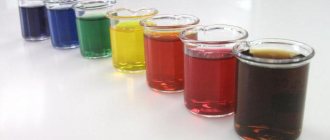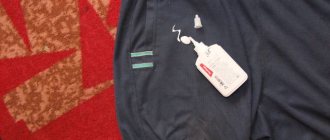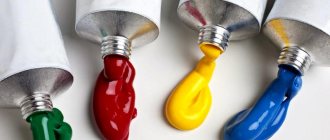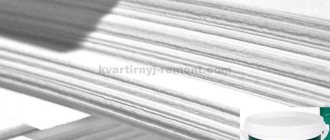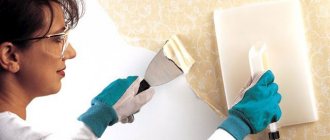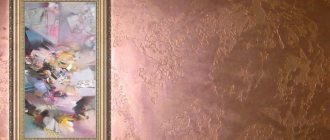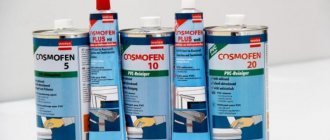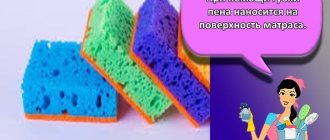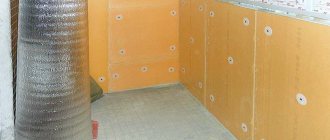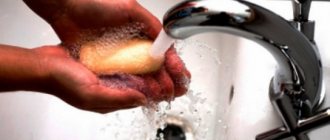Despite the fact that the shelves of hardware stores are literally filled with various types of adhesive mixtures for any purpose and purpose, some people are already resorting to the manual method of making glue. There may be several reasons: either the purchased product turned out to be of low quality, or a small quantity is required, and there is no point in spending money on a whole package. Since it is quite possible to make any type of glue at home, some consider this an excellent alternative to the store-bought option. Therefore, workers and handymen will find useful tips in their work on methods for creating glue for working with various materials.
PVA glue
A type of PVA glue is widely used in various fields, including:
- Working with paper.
- Creation of applications.
- Minor repair work.
- Large-scale construction.
- Used for attaching wallpaper to walls.
- It is an integral component in the mortar for tiling.
- It can be used to prime the surface before applying finishing and others.
The scope of application of office glue is very wide, so such glue can come to the aid of any owner at the right time and in the right situation. You need to know in advance how to make office glue right at home.
To do this you need to prepare the following components:
- 2 liters of distilled water.
- 5 g photographic gelatin.
- 4 g glycerin.
- 100 g wheat flour.
- 20 ml of ethyl alcohol.
You need to prepare a PVA solution in 2 main stages:
- Preparatory involves soaking gelatin in a glass of water.
- Basic.
Note! Before making PVA glue at home, you need to wait until the gelatin completely swells in water.
Only then proceed to the following actions:
- Pour distilled water into a convenient container, add flour, and place in a water bath.
2. Add prepared gelatin, pre-mixed with a small amount of water to eliminate lumps.
3. Then bring the mixture to a boil, but do not let it boil until it reaches the consistency of thick sour cream. To achieve homogeneity of the mixture, constant monitoring and stirring is necessary.
4. After this, alcohol and glycerin are added.
5. Mix the finished substance thoroughly to achieve a thick, homogeneous mass.
6. After the glue has cooled, it will be completely ready for use.
Traditional flour paste recipe
In some cases, this is resorted to when there is an urgent need to perform any work related to the use of glue. For example, if the amount of adhesive is incorrectly calculated, and it runs out in the midst of wallpaper renovation work. In order not to give up what you started and not rush to the store, you can make homemade glue, the quality of which will be much higher than purchased glue. In addition, when using it, you can be completely sure that it does not contain substances harmful to humans. It’s not difficult to prepare, and the material can always be found in the house. This is wheat flour. Flour glue is prepared at the rate of 1 liter per two or three rolls of wallpaper.
To prepare it you will need:
- container, the volume of which depends on the required amount of glue,
- flour – 6 tbsp. spoons per liter of water,
- water – 1 liter.
Cooking method:
- Heat water to boiling.
- In a separate bowl, dilute the calculated amount of flour in a small amount of cold water until a homogeneous mixture (without lumps) is formed and liquid sour cream is thick.
- Pour the resulting mixture into boiling water in a thin stream, stirring constantly.
- Bring to a boil again and leave to cool.
When finished, it should have the consistency of thick jelly. Similarly, you can make glue from starch, which is no different in quality from flour paste. In terms of gluing efficiency, both flour and starch pastes, in some cases, even surpass ready-made industrial adhesives. Wallpaper glued with them adheres perfectly to any wall surface. They can glue all types of paper and cardboard.
Glue stick at home
A type of hard glue in the form of a pencil is the most popular and convenient for office work. Its high price is justified by its economical consumption. But sometimes it’s better to save money on this if you know how to make glue stick at home.
Note! Before starting work, you need to prepare a special form for the future glue stick. This could be a case of already empty glue, a cardboard tube, or any similar items. For further use, the packaging must be sealed and the glue must be freely squeezed out of it.
Basic steps to create a glue stick:
- A piece of laundry soap is rubbed on a fine grater, or you can do the work with a knife. The main thing is to make very small chips so that they dissolve faster.
- Then mix it with water in a 2:1 ratio. You can take two tablespoons of soap and one tablespoon of water, place in a suitable container, place in a water bath, wait until the soap is completely dissolved, while stirring constantly.
- Add 3-4 tbsp PVA glue to the mixture of the future adhesive composition. spoons.
- Mix thoroughly until smooth and remove from heat.
- Leave the adhesive mass to cool at room temperature, as a result of which a white substance similar to paraffin, characterized by increased flexibility, is formed in the container.
- This mass must be placed in the prepared form, which will be used for applying glue.
It is important! If the mixture is not viscous enough, you need to redo it. To do this, you do not need to take new products, but put the same mixture in a water bath, adding more soap shavings to it.
If the amount of finished glue turns out to be much more than can be placed in the prepared container, it can be stored in a plastic bag in a cool, dark place.
What properties should the composition have?
If the characteristics of office glue do not require special strength and other performance characteristics, then compositions intended for repair and construction work must meet a number of conditions, which can also be considered from the point of view of the advantages of the composition. They are as follows:
- Frost-resistant qualities. This refers to the resistance to freezing inherent in the already applied and dried composition. In addition, it is not recommended to use any PVA glue that has been left over the winter in an unheated garage. Frozen and then thawed, the composition loses almost all adhesive qualities and is not even able to hold paper.
- High adhesive properties. With strict adherence to the proportions and procedure indicated below, the resulting adhesive composition will have characteristics that do not distinguish it in any way from what was purchased in the store.
- Due to the absence of toxic components, PVA glue belongs to the group of environmentally friendly materials that are completely safe for humans.
- Complete absence of shrinkage, characteristic of many modern adhesive materials. This means that when applying a thick layer, air cavities do not form here.
- The dried structure has good strength, which allows the composition to be used to partially fill cavities. For example, when gluing wallpaper with an overlap: this minimizes the error in places where the roll material is double overlapped.
- The composition does not burn and does not support combustion.
The most convenient way to mix the adhesive composition Source hotel-a.
The main disadvantage of PVA glue is its low water resistance. When water gets in, the composition is simply “washed off” from the surface. However, this condition applies to simple types, which do not include additives that reduce these indicators.
Performance characteristics: material consumption per m2, adhesive ability, elasticity, drying time and the permissible number of freezing cycles without loss of properties depend on the components used in its manufacture.
Wood glue
To prepare wood glue, you need to use a regular type of adhesive that has been pre-welded.
Important! It is high-quality and correct cooking that will determine the further properties of the finished glue.
Hard wood glue can be broken into several pieces, placed in a container of cold water and left to soak until it can be crushed with your hands. On average it is 3-4 hours. Then you need to catch pieces of softened glue, put them in a container and put them on fire. Cook for 15 minutes until the glue is completely liquid without any lumps. To get rid of them, you need to constantly stir the glue with a stick. These steps will also help prevent it from burning.
Note! This glue should be boiled over low heat, avoiding strong boiling.
After the gelatinous mass becomes liquid, you need to add alcohol or vodka to it in the ratio of 720 g of mass and 950 g of vodka. Then for every 100 g of adhesive add 12 g of alum in powder form. The finished product welded using this technology provides good high adhesive strength and gives the finished seam water-repellent properties.
Features of use
The glue stick is easy to use; for this reason, the process of gluing paper is simple. The following actions are performed:
- The tube opens.
- The rod is unscrewed.
- The desired area is lubricated.
- Two elements are connected together.
- Afterwards the bonding area is smoothed out.
It is important to close the lid tightly after using the glue so that it does not dry out prematurely. Small children should only use the product near adults.
If the layer gets on a piece of clothing, you will need to wash the fabric with detergent; there should not be any particular difficulties with the stain.
It is important to close the lid tightly after using the glue so that it does not dry out prematurely.
Liquid wood glue
Before you make glue at home, you need to know that carpentry in a liquid state cannot be stored for the following reasons:
- Because it gels.
- It becomes moldy and spoils.
- Has a strong unpleasant odor.
To prepare liquid wood glue, you can use the following recipe:
- You need to take 250 g of regular wood glue.
- Dissolve it in 1 liter of hot water.
- Mix 10 grams of barium peroxide, 5 grams of sulfuric acid and 15 g of water in a separate container, heat in a water bath at 80 degrees.
Interesting! This heating process will release sulfur dioxide, which will give the mixture a pleasant aroma.
When all components are combined, the mixture will not gelatinize, and mold will not form on it even after being outdoors for a long time.
Bonus from builders for cooks: food glue
Nowadays, many people are fond of home baking and decorating it with sweet figures and various flowers made from edible mastic. But in order for all this beauty to retain its shape and stick to the surface of the cake, special food glue is required. Of course, you can buy it at the store, but before you go looking, try making glue at home. There are several recipes for this.
Recipe No. 1: based on starch
Components:
- starch - 4 tbsp. spoons,
- water – 1 glass.
Preparation:
- Prepare a thick starch jelly and leave it in a warm place for several hours. It should turn into a viscous mass.
Recipe No. 2: sugar glue
Components:
- 250 g granulated sugar,
- Glass of water.
Preparation:
- Prepare a slightly undercooked caramel toffee. It should remain in the form of a stretchy liquid.
Waterproof glue
To prepare waterproof glue, you can use products from the refrigerator such as cottage cheese or milk that has just curdled. You need to add slaked lime to them. This will allow you to get a thick, uniform mixture. The resulting mixture can be used to glue wooden bases efficiently and reliably. They need to be pressed tightly together and dried well.
For another recipe for creating waterproof glue, you need to prepare ingredients such as wood glue, water, and drying oil. It is necessary to boil wood glue mixed with water and 35 g of drying oil in a prepared container. The prepared adhesive solution is applied in a heated state on a wooden surface. After hardening, the seams are not afraid of exposure to either cold or hot liquids and are completely waterproof.
Technical characteristics and purpose
OKPD2 stationery glue or another version has a number of technical properties, they are typical for most similar adhesive solutions. The properties of pencil adhesives described below can be highlighted:
- The products do not contain toxic substances, therefore they do not harm human health, there are no negative reactions on the skin, and if the product enters the body, there will be no serious harm either;
- Convenient containers allow you to carry the composition without fear of it getting on nearby surfaces;
- Quick-drying property;
- Low consumption and long service life.
It is used for gluing paper and cardboard products; there are types suitable for working with fabric and photo paper bases.
You cannot choose glue for gluing: ceramic, glass, plastic, metal bases.
It is used for gluing paper and cardboard products; there are types suitable for working with fabric and photo paper bases.
Adhesive for attaching paper and rubber to metal
Gluing various materials to metal is always quite problematic. Therefore, you need to know how to prepare special glue suitable for these purposes. If you use regular types of glue and attach the paper to polished metal, the material will usually fall off quickly.
Therefore you need to act like this:
- Prepare a concentrated soda solution, heat it and generously lubricate the metal base.
- After this, wipe it thoroughly with a dry cloth.
- Apply onion juice in a thin layer. Simply cut the onion and wipe the glued areas with half.
- After this, attach the paper, which was previously smeared with special glue. It is prepared from wheat flour with the addition of granulated sugar and cold water. Then it is thoroughly mixed to the consistency of sour cream, brewed with boiling water until it becomes transparent.
- The paper will hold very firmly.
To glue rubber to metal, you can use glue prepared by dissolving shellac in strong ammonia in a ratio of 1:10.
What can be made from glue
As mentioned earlier, the properties of adhesives depend on the constituent elements. Many are suitable for gluing paper, cardboard, fabric products, and photo paper. It is used to create a variety of crafts in children's institutions.
Creative ideas are often realized with the help of a glue stick. You can choose a product to work with natural materials.
It is used to create a variety of crafts in children's institutions.
Starch glue
To prepare such an adhesive solution, you need to take 10 parts of wheat starch, add cold water, stir thoroughly until thick, add boiling water, stirring constantly. The amount of hot water should be determined by the future desired consistency of the paste. To make it more durable, one part of alum should be added when warm. To increase stickiness, add 5-10 parts of wheat or 15-20 parts of rye flour.
Application
For a strong and reliable connection of surfaces, it is necessary to strictly adhere to the manufacturer’s recommendations on the packaging when working.
There are 2 types of gluing:
- Hot. The connection is carried out at temperatures from +70 to +160° C, the procedure lasts only a few minutes.
- Cold. Gluing is carried out at room temperature, but the adhesive seam gains the strength stated by the manufacturer within 1-2 days.
Casein glue
To prepare this adhesive, you need to take casein or cottage cheese and add it in parts to a saturated borax solution until the product is completely dissolved. The result should be a transparent consistency of a substance of considerable thickness. In this case, the mixture will be highly sticky. Glue is used for gluing stamps and labels; it begins to work only after light moistening. To make the composition able to be preserved for a long time, you need to add a few drops of Schering's liquid formalin to the composition.
Excellent dextrin based paper adhesive
For origami, quilling, and paper appliqué, dextrin paper glue, which you can prepare at home, is ideal. And for this it is not at all necessary to look for dextrin in stores. It is easily prepared from starch. You need to take it in the required quantity. Place in a heatproof bowl into a slightly heated oven. After which, gradually increase the temperature to 160ºС and maintain at this temperature for about an hour and a half. Under the influence of hot air, starch is broken down, and it turns into dextrin. Now you can start preparing the glue.
Ingredients:
- dry dextrin – 3 tbsp. spoons,
- water – 4-5 tbsp. spoons,
- glycerin – 1 tbsp. spoon.
Preparation:
- Mix dextrin powder with water. Heat slightly until the dry substance is completely dissolved, stirring continuously. Then add glycerin.
Mastic glue
Most types of glue that are used to join porcelain, glass and earthenware have an opaque consistency, and after drying they leave unattractive yellow marks at the joints. Mastic glue is an excellent alternative that is colorless and completely transparent.
You need to prepare it according to this method:
- Make or find a suitable container with an airtight lid.
- Mix 55 g of chloroform and 68 g of crushed rubber in it.
- After the last substance has dissolved, add 10 g of granular or drip mastic.
- Leave for a week or 8 days in a closed container.
- During this period, the mastic will completely dissolve, and the glue will be ready for use.
Important! The finished glue will ensure reliable adhesion of earthenware, porcelain, and glass without unattractive traces of glue at the joints.
Review of popular brands
There are many glue sticks on sale from different manufacturers. It is quite difficult to answer the question which one is better. But it’s worth getting to know the main suppliers of adhesive sticks to the consumer market.
Erich Krause Joy
Erich Krause is an international company. It produces stationery, art supplies, school bags and backpacks, gifts and decorative items. Products are sold through the company's sales network and distributors. Consumers consider Erich Krause Joy glue sticks to be among the best on the market. The peculiarity is that the adhesive composition is tinted. The color disappears after joining the parts. This helps to cover the entire work surface with glue without leaving any dry areas. Children are amused by chameleon glue.
Erich Krause Joy is a PVP adhesive that allows you to glue paper, cardboard, and textiles. It is convenient to work with it in the office and do creative work at home.
Erich Krause Crystal
Erich Krause Crystal is another product from Erich Krause. This is a clear glue stick. The adhesive is designed for gluing paper, thin cardboard and photographs. It is elastic. Applies evenly and leaves no residue. Equally well suited for office work and activities with children. Users noted only one drawback - the relatively high price. But not a single one regretted the purchase.
Kores
Kores is a fairly well-known manufacturing company in Australia. The family business produces office products and school supplies. Kores glue stick is PVP glue. Glycerin, which is part of it, ensures soft gliding. The pencil does not dry out for a long time. Its traces are washed off well with water. The glue is colorless. The sealed packaging reliably protects the pencil from drying out. Kores glue stick glues paper, textiles, photo paper, and cardboard.
Comus
Komus is Russian. This trading and manufacturing company has been operating in the country since 1990. The enterprise was founded on the basis of a student cooperative. Komus produces and sells:
- stationery;
- paper;
- cardboard;
- packaging;
- office equipment;
- Consumables;
- furniture for offices.
Comus glue stick is filled with PVP glue. Its purpose is to glue paper, cardboard, fabric and photographs. The glue is transparent. There is no adhesive pigment in it. Consumers note good value for money, high glue efficiency and excellent elasticity.
See also
How to properly glue a book in hard and soft cover if it is torn
Sandara glue
This type of glue is prepared according to this recipe:
- Alcohol, sandarac and turpentine in a ratio of 100:6:6 are mixed in a container
- The mixture is heated.
- Then add carpentry and fish glue in equal proportions, which were previously dissolved in hot water.
Note! Their quantity should be such that the finished glue is liquid but viscous. If the adhesive solution is prepared using this method, then the seams of the items will be moisture resistant after drying.
Tips and tricks
To enjoy the created craft or other objects glued together with an adhesive solution, you need to know some of the nuances of the work. So the experts highlight the following tips and recommendations for work:
- Before purchasing the composition, it is advisable to smell the tube; if you notice the aroma of chemicals, it is better not to use the product;
- The substance is released uniformly, there should be no lumps;
- The lid is chosen to close tightly so that air does not get inside and the composition does not dry out for a long time;
- When you notice that the top of the pencil has dried, you can use it again. To do this, the container is tightly closed, after five hours the layer will again have the desired consistency.
The lid is chosen to close tightly so that air does not get inside and the composition does not dry out for a long time.
Roller adhesives are distinguished by their ease of use, they are practical and therefore are chosen very often. The fast drying and reliable adhesive for working with paper surfaces helps you create a variety of creative crafts. When choosing an adhesive, you should pay attention to the quality of the container and the composition of the adhesive, then it will be easier to obtain the required strength.
Rubber glue
There are surfaces and objects that are constantly exposed to acids. If they break, it is necessary to use rubber glue, which is not afraid of the effects of such substances. It is prepared from a mixture of rubber, coal tar and asphalt with the addition of alcohol, ether and chloroform in equal proportions. It provides reliable fastening and is not affected by acids.
Advice! If you prepare this glue in a more liquid state, it can be used as an alternative to varnish for polishing wooden surfaces.
Epoxy glue: DIY
Epoxy resin adhesive
To make such a composition you will need a modified resin and a special hardener. If the product is intended to be used in construction work, various additives may be required.
This could be aluminum powder, for example. Epoxy glue is quite difficult to prepare yourself; you must follow the instructions exactly.
The hardener and epoxy resin mix well: forty parts of hardener you need to take sixty parts of resin. After the mixture thickens well, place it in water heated to seventy degrees. All necessary fillers are added to the mass last, to give it the required consistency. The product must have a certain fluidity so that it can be easily and simply applied to the prepared surface.
Chromium glue
This type of glue is ideal for those items that are regularly exposed to water. Using this technology, it is necessary to prepare wood glue, dissolve it over low heat in water in a ratio of 5:10. Add the Chrompic solution, mix thoroughly and pour into a tin. The mass will cool in it; before use, you need to keep some of the glue in a water bath.
Criterias of choice
When choosing a glue stick, you should pay attention to the following criteria:
- The glue is easily and evenly applied to the paper.
- The adhesive stick contains no solvents.
- It has no smell.
- The rod does not fall out of the tube even when completely unscrewed.
- The quality complies with GOST standards.
The strength test aims to check the quality of bonding. It's not difficult to carry out. A good glue stick should glue the parts together within 3-4 minutes.
After this time, when trying to tear, the glued parts should tear, but not come unglued.
Glue and ointment for drive belts
To glue drive belts, you can use the following glue recipe:
- You need to take wood glue and fish glue in equal proportions and soak it in water for 10 hours.
- Transfer the swollen pieces to clean water and cook until a thick, homogeneous mass is formed.
- This glue must be applied to the belts while it is hot.
- Before this, you need to make the surface of the belts a little rough.
Advice! The finished composition can be used not only for its main purpose, but also to eliminate defects on various leather products.
Advantages and disadvantages
Malak glue or other variants of pencil glues have both negative and positive sides. To understand whether a type is suitable for a particular situation, all aspects should be examined. Among the advantages are the following:
- Convenient format, transportation, storage, application is comfortable;
- Ease of use;
- Economical consumption, the layer is applied evenly without unnecessary expenses;
- Harmless, the composition is non-toxic, does not smell strongly, allergic reactions from contact do not occur;
- Clean use, due to the solid structure, the glue does not spill onto other surfaces from the tube;
- Can be used by adults, they can also be applied by children;
- Long service life;
- Affordable price;
- Easy to remove, only water required.
Among the disadvantages, the following points can be noted:
- The gluing quality is not high; not all types of paper sheets can be glued;
- Quick hardening after first use;
- Difficult to spread over paper surface;
- Not universal.
It must be taken into account that disadvantages may apply to certain brands, and in order for the glue to last for a long time, storage rules must be followed.
Economical consumption, the layer is applied evenly without unnecessary expenses.
Glue and ointment for bicycle tires
Liquid glue is suitable for filling punctures and holes in bicycle tires.
You can prepare it in this way:
- Take 235 kg of chloral hydrate, dissolve in 1 liter of water, add 400 g of standard white glue.
- The mixture should sit for two days and acquire a liquid consistency.
- After this, it can be used at work.
You can also make liquid fish glue. You need to take 100 parts of this type of adhesive mass, acetic acid (125 parts). Dissolve gelatin in water in a ratio of 125:20. Combine all the ingredients together and gradually add 20 portions of shellac to the finished mixed mixture.
There are also special glues that have a narrow specialization, such as repairing bicycle tires. You need to dissolve 52 g of shellac (natural resin) and the same amount of gutta-percha (resin extracted from a plant) in a water bath. After they are completely melted, add 6 g of red lead and 6 g of sulfur, which were also melted in advance. The result is a thick mixture that needs to be heated before applying to the tires.
How to make glue at home (2 videos)
Making glue at home (17 photos)
Additional options
Less often, users try to make other types of glue that serve as an alternative to store-bought products.
Glue stick
The glue stick is made from PVA. For the case, you need to take an old antiperspirant deodorant package that closes tightly. Make laundry soap (2 parts), add water (1 part). Dissolve in a water bath, pour in 4 tablespoons of PVA, cool. Then put the mixture into packaging and let it harden.
Super glue
Of course, it is impossible to make real super glue - it is prepared from cyanoacrylate with the addition of a number of complex chemical components. But you can still create a very reliable composition with your own hands. For this you will need:
- 125 g wood glue,
- 100 g sugar,
- 35 g slaked lime,
- 450 ml water.
Sugar is dissolved in water, lime is added, and heated for 30 minutes in a water bath. Next, crushed wood glue is placed into the solution and boiled until the mass is homogeneous. The product can be used for gluing metal, ceramics, porcelain.
Foam glue
Wood glue is best suited for gluing foam plastic. Casein glue is also suitable, which is mixed in equal parts with slaked lime. This product is ideal for fastening polystyrene foam when insulating a house.
Foam glue
Glue is made from acetone and polystyrene foam to join elements of glass, metal, and wood. The foam is crushed into crumbs and poured with acetone to completely cover it. A viscous mass is obtained almost immediately; it can be used like regular glue, after mixing well.
When making adhesives with your own hands, you can save a lot of money, especially if you are planning a major renovation of your house or apartment. The quality of the finished product may be somewhat inferior to the store-bought product, but it will definitely be safe for health and affordable!
When does it make sense to make your own glue?
Despite the huge range of adhesive products in stores, some prefer to use their own glue. Moreover, liquid of a certain thickness is prepared for different tasks.
What is better, buy ready-made adhesive or make it yourself? If glue is required for delicate or critical work, then it makes sense to turn to factory-made products. They are not very expensive - 1 kg can cost around 40-60 rubles. But often manufacturers proceed from savings and produce not the best product.
Read here: How to make a pompom: a master class on simple and quick ways to sew from yarn
If you look at the photo of PVA glue, you can see that good glue does not contain lumps or foreign inclusions.
The color of the glue should be uniform - white or beige. Therefore, if there are doubts about the quality of the product, it is better to prepare PVA on your own.
Cottage cheese mixture
At home, it is possible to make a binding solution for polystyrene foam used as insulation and sound insulator. It is necessary to mix regular cottage cheese and slaked lime in equal proportions. The peculiarity of this glue is its rapid hardening, so you need to use it as quickly as possible.
Casein glue is suitable for wood and leather products, which can also be created at home using available ingredients. Its basis is cottage cheese, which undergoes a certain processing process before cooking. It needs to be soaked in a soda solution for 20 minutes.
It is necessary to make a mixture based on the proportions of 2 tablespoons per liter of water. As soon as a quarter of an hour has passed, you need to thoroughly rinse and squeeze the curd so that it becomes dry and hard. This is how casein is prepared. Next, powder is prepared from dry cottage cheese. It should be poured into a bowl and water should be added in a thin stream.
It is important to stir the mixture constantly
The liquid is added at the rate of one part casein to two parts water. The whole process continues until the glue reaches a homogeneous state. On average, its preparation takes half an hour. The better the casein is mixed, the higher its adhesive properties will be.
https://youtube.com/watch?v=xGQ2v1op9J0
This glue is great for repairing shoes and wood items. However, it is worth remembering the lifespan of the composition, since after 2 hours, the substance becomes unsuitable for use.
Benefits of using homemade adhesives
You can make wallpaper glue from whatever is in your kitchen cabinet or pantry. Homemade adhesive cannot be an alternative to a purchased product. Chemical companies produce various types of wallpaper glue with important technical features and improved composition. The purchased adhesive product contains substances that prevent the wallpaper from becoming damp in conditions of high humidity, prevents the development of mold and mildew, and has insecticidal properties.
Homemade glue does not have all these qualities. After all, it is prepared from simple substances, the main property of which is to form an adhesive substance during thermal, chemical treatment or when mixing various ingredients. True, homemade glue has its advantages. It is prepared from simple, often inexpensive ingredients. The finished composition, made at home in the kitchen, will be 10 times cheaper than purchased adhesives. A homemade adhesive is prepared from natural raw materials. This means that this glue can be used in any room, even in a children's room.
Rules for preparing paste
- wallpaper paste is not prepared from wheat flour, as this leads to yellowing of the paper material after drying;
- Considering that the product contains food products, it can attract insects, add a small amount of karbofos;
- when the paste is being prepared, how to improve its properties - this also needs to be thought about, for example, a warm microclimate helps reduce the effectiveness of the composition, you need to find out in advance how to properly store the glue - the temperature should be within +18...+20°C;
- a paste that is too thick will not provide the required effect, a change in the structure of the substance is due to its prolonged cooking, in this case the product is diluted with water again (a small amount is introduced) and heated, but for a short period;
- when the paste is being prepared, the heating temperature of the liquid should not be higher than +40°C;
- to improve properties, PVA glue is added to the composition, but its content should not be higher than 5%;
- as the substance is used, it will lose properties (gradually thicken); Hot water will help restore its original structure - add 1 tbsp. l., constantly stirring the product using a blender or mixer - you should act quickly, because the composition will soon thicken again.
